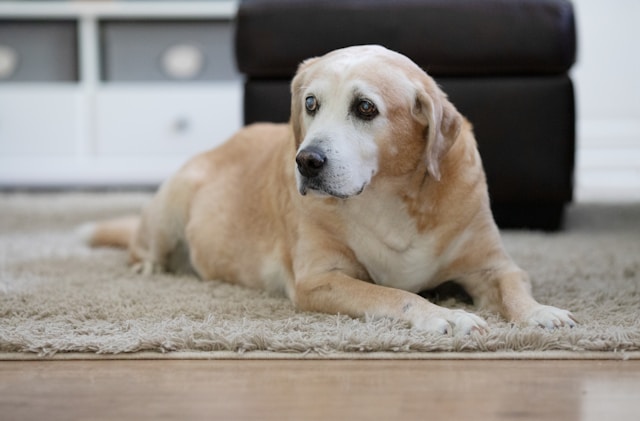
Glaucoma is a serious eye condition that affects not only humans but also our four-legged friends – dogs. This eye disease can lead to permanent vision loss if not diagnosed and treated early.
In this article, we will explore what glaucoma is in dogs, its symptoms, causes, and available treatment options.
What is Glaucoma?
Glaucoma is an eye disease characterized by increased pressure inside the eye. This elevated pressure can damage the optic nerve, which is responsible for transmitting visual signals from the eye to the brain. If left untreated, glaucoma can result in permanent and irreversible vision damage.
Symptoms of Glaucoma in Dogs
Dogs with glaucoma may exhibit a variety of symptoms, including:
- Eye redness: The dog’s eyes may appear red due to increased pressure inside the eyeball.
- Excessive tearing: Glaucoma can cause an increase in tear production, leading to excessive tearing.
- Eye pain: Dogs may show signs of discomfort or eye pain, such as excessive blinking, rubbing the eyes, or avoiding contact with the affected area.
- Decreased vision: As glaucoma progresses, the dog’s vision may become compromised. They may demonstrate hesitation when moving around familiar environments or appear disoriented.

Causes of Glaucoma in Dogs
There are several potential causes for glaucoma in dogs, including:
- Genetics: Some dog breeds have a genetic predisposition to develop glaucoma, including the Cocker Spaniel, Basset Hound, and Shar-Pei.
- Eye injuries: Traumas or injuries to the eye can increase the risk of developing glaucoma.
- Eye infections: Chronic or untreated eye infections can lead to the development of glaucoma.
- Anatomical abnormalities: Certain structural abnormalities of the eye may predispose a dog to glaucoma.
Treatment Options for Glaucoma in Dogs
Treatment for glaucoma in dogs aims to reduce intraocular pressure and alleviate the animal’s discomfort. Treatment options may include:
- Medication: Eye drops or oral medications may be prescribed to lower the pressure inside the eye.
- Surgery: In some cases, surgeries such as laser iridectomy or drainage surgery may be recommended to improve fluid flow within the eye and reduce pressure.
- Enucleation: In severe cases where the eye’s vision is irreversibly compromised, and the eye is causing significant pain, surgical removal of the affected eye (enucleation) may be necessary.
Conclusion
Glaucoma is a serious eye condition that can affect dogs of all breeds and ages.
It is crucial to be vigilant for signs and symptoms of this disease and seek immediate veterinary care if you suspect your dog may be suffering from glaucoma.
With early diagnosis and proper treatment, it is possible to manage glaucoma and preserve your pet’s quality of life.
Glaucoma in Dogs
Frequently Asked Questions
Glaucoma in dogs is a serious eye condition that involves an increase in pressure inside the eye. This can result in irreversible damage to the optic nerve and eventually lead to blindness.
Common symptoms include red eyes, increased tear production, dilated pupils, rubbing of the eyes, blurry vision, and, in advanced stages, the eye may appear enlarged or bulging.
Glaucoma can be primary (hereditary) or secondary to other conditions such as trauma, eye inflammation, cataracts, or intraocular tumors. Breeds such as Cocker Spaniels, Basset Hounds, and Siberian Huskies are more susceptible to the primary form.
Diagnosis is typically made through measurement of intraocular pressure, comprehensive ophthalmic examination, and sometimes additional tests such as ultrasound or computerized tomography.
Treatment aims to reduce intraocular pressure to alleviate discomfort and preserve vision. This may include topical or oral medications to decrease fluid production or increase its drainage, laser surgery, or conventional surgery in more severe cases.
While primary glaucoma cannot be completely prevented, it’s important to undergo regular eye examinations in predisposed breeds and seek early treatment if symptoms are observed.
Avoiding eye injuries and promptly treating any inflammation or eye disease can help reduce the risk of developing secondary glaucoma.
If you suspect your pet is ill, immediately call your veterinarian. For health-related inquiries, always consult your veterinarian as they have examined your pet, know the pet’s health history, and can make the best recommendations for your pet.
